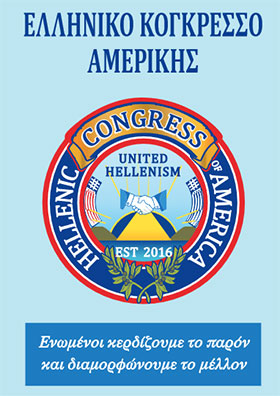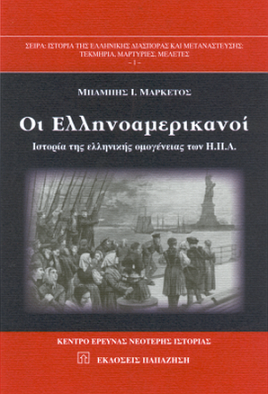Journeys and connections in Ancient Greece

The Melbourne Museum is currently hosting an exceptionally important visiting exhibition of forty-four objects from the National Museum in Athens. Its importance lies in two factors. One, objects from the NAM rarely if ever travel. It shows the importance placed on multicultural Melbourne as the third largest Greek city in the world after Athens and Thessaloniki. Second, as I shall explain, is the astounding selection of objects chosen, that emphasise Greece’s connections to the broader Mediterranean world through trade, diplomacy, and colonisation activities.
The exhibition begins in the Early Bronze Age (ca. 2500 BCE), with a Cycladic idol, a flat and abstract-schematic folded arm statuette, where the narrative attests to far flung connections between Greece and its neighbours beginning in 6000 BC. It ends in the present with a movie on the Greek shipping trade throughout the Mediterranean, Atlantic, and Black Sea regions noting all the famous families and very important shipping ports in the 19th century. The message is: each island (and coastal region) was a nucleus for the transmission of knowledge.
The show presents Greek culture in a different light in a way that would not have even been shown thirty or even twenty years ago.
This is most clearly represented in the placement of the statue of “Antinous” dating to 130 CE next to a Greek Kouros (nude figure of a male youth) dating to the 6th century BCE. Antinous was the “favourite” of the Roman Emperor Hadrian, who deified Antinous after his premature drowning in the Nile and erected numerous statues of him throughout the Empire, sometimes in the guise of Osiris as we see here. The installation of these two works side-by-side is of critical importance for deconstructing the way ancient art has been studied since the discipline of Art History began in the Renaissance with the biography of the artists by Vasari.
However, we need not go back that far, as of key importance is the work of the 18th century art historian, Johan Joachim Winkelmann, whose 1764 History of Ancient Art has heavily influenced the reception of Greek art ever since. Building on the ideas of Giorgio Vasari, the father of Art History, Winkelmann used artworks to demonstrate a set of norms that emerged in Classical Antiquity and revived in the Renaissance. These works have been used as a yardstick by which to judge other works of art and cultures ever since.
As a homosexual, Winckelmann’s appreciation for and privileging of Greek art allowed him to openly express his admiration for male nudity in a sexually repressive period. Under this guise, Winckelmann emphasized notions of freedom, youth, and serenity that he believed were exemplified in classical Greek art, while downplaying the tragic and irrational qualities in Greek civilisation as seen in the cult of Dionysos.
In studying ancient art from the point of view of classical artistic style, Winckelmann compared the art of more ancient cultures such as Egypt to a perpetual infancy, remaining misshapen and stunted. In contrast, the art of Greece matured, becoming the handsomest of human beings. Furthermore, Winckelmann compared Egyptian art to a tree whose growth was arrested so that it never fully developed, and he viewed Persian art in a similar vein. In other words, the Greeks were able to forsake the stiff and motionless forms of their early works such as Archaic Kouros and Kore statues, but the Egyptians were not. These sorts of ideas underpinned 18th and 19th century ideologies of racial superiority they were used to legitimise modern colonialism and orientalism.
These ideas continue to persist on the fringes of society today, despite the discovery of the fluid and hyper-realistic art of the Amarna Period of the Pharaoh Akhenaten as well as the much earlier, Dynasty V depictions of Egyptian scribes.
Returning to “Antinous” and our much earlier Kouros, the depictions indicate a desire on the part of patrons to affiliate with earlier Egyptian notions of youth and permanence, rather than a failure to depict realism. We also see this clearly in the Moscophoros, a depiction of an unrealistic youth of Archaic style carrying a realistically depicted calf intended for sacrifice. In other words, art was a medium to communicate ideological values, it was not simply a medium to demonstrate a particular skill set.
The exhibition seeks throughout to break new ground in the representation of ancient Greece. A subtle example in the beginning, is the Archaic Sphinx, the guardian of a grave, still preserving elements of polychrome. This serves to remind us that Greek sculpture and architecture was brightly painted, rather than the pure white buildings and scultptures reproduced in Neo-classical works of the modern period, a cruel hoax perpetrated by the bright Athenian sunlight!
Elsewhere, we see a small, white ground alabastron (a perfume bottle) portraying African figures as well as a Janiform or double headed wine drinking cup depicting an African and a Greek. We know that Greece was familiar with Africa going as far back as the Minoan civilization on Crete (curiously omitted from the exhibition), where a famous fresco fragment from Knossos shows a black warrior, perhaps a Nubian mercenary running. A short time later, Homer mentions Aithiops (burnt-faced persons, now Ethiopians) several times in the Iliad and in the Odyssey. They were viewed with admiration for their close association with the Greek gods.
The exhibition works against the earlier narrative of the Greeks as representing the ethnically pure and free childhood of Europe but situates them in a more complex set of relationships with their Mediterranean neighbours. Yet, the Greeks are still inscribed as central in that they are shown as the people doing the traveling and the action seems to all go in one direction. In one of several narrative films that go with the exhibition arrows are shown radiating outward from Greece to the various parts of the Mediterranean however very few arrows are shown radiating inward even though items, particularly copper and tin, were coming into Greece.
Another important nod to the non-Greek world is the display of a Phoenician Reshepf (a divine lord associated with thunder, protection, or plague) figurine forms part of the exhibition. Dating to the early Iron Age this is one of number of such figurines found in Greece and perhaps an offhand reference to the fact that the Greek alphabet was adopted from the Phoenician alphabet. Their appearance in Greece goes back to the Late Bronze Age, in the form of Canaanite smiting deity figurines that were influenced by Egypt and in turn influenced the iconography of Zeus. And it’s a 300 kg head of Zeus that forms another centre piece to the exhibition, a subtle reminder, along with Herakles that Greece remained a patriarchal society.
My criticisms remain minor. Signage in the exhibition might have been a bit more generous with regard to explaining the items on display. I explained to one visitor that the “frying pan,” an item depicting an early representation of a long boat, is an object named by archaeologists based on its modern appearance rather than its function which remains obscure. Another minor detail is that Greece is always depicted as adventurous and dominating trade in the European region. Travel in the Mediterranean was multi-directional, as Greece was not just a place people left, but also a place people went to. And it was through trade with the East that the Minoans first acquired the deep-hulled ship with mast around 1900 BCE that collapsed maritime space, and was adopted later by the Mycenaeans.
The shortcomings, however, remain minor and Melbournians should make up their own mind by taking advantage of this rare opportunity to view some of Greece’s finest and most intriguing historical objects. The exhibition is open most days until 14 August and bookings are recommended.
On the painting of Greek art, see Sarah E. Bond, Whitewashing Ancient Statues: Whiteness, Racism and Color in the Ancient World, https://www.forbes.com/sites/drsarahbond/2017/04/27/whitewashing-ancient-statues-whiteness-racism-and-color-in-the-ancient-world/?sh=296ee1fc75ad
On the multi-ethnic nature of ancient Greece, see Classics at the Intersections, by Rebecca Futo Kennedy, https://rfkclassics.blogspot.com/
Louise Hitchcock is Professor of Aegean Bronze Age Archaeology in the Classics and Archaeology Program at the University of Melbourne. She is the author of Minoan Architecture: A Contextual Analysis, Theory for Classics, and Aegean Art and Architecture(with Donald Preziosi).
neoskosmos.com










Σχόλια Facebook